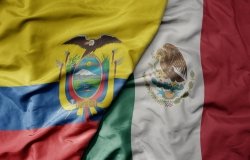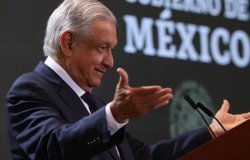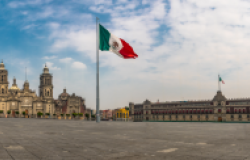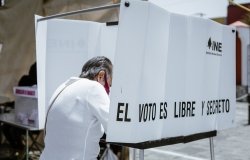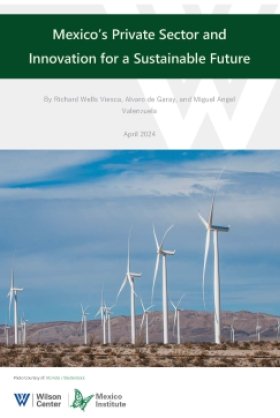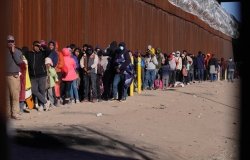Shared Responsibility: U.S.-Mexico Policy Options for Confronting Organized Crime
Overview
The intensity of cartel violence in Mexico has prompted thinking on what the United States and Mexico can do together, as well as separately, to dismantle the trafficking networks that fuel it. As part of this analysis, the Woodrow Wilson Center Mexico Institute and the University of San Diego Trans-Border Institute commissioned policy-focused research in 2010 that explored in detail various sub-issues of the U.S.-Mexico security relationship. This research led to the edited volume, Shared Responsibility: U.S.-Mexico Policy Options for Confronting Organized Crime, launched with the participation of several authors at the Wilson Center on Friday, Oct. 22. The book compiled chapters on the structure of drug trafficking organizations, their presence in Central America, drug distribution networks in the United States, U.S. drug consumption, judicial and police reform in Mexico, money laundering, the media, the Mexican military, U.S. and Mexican strategies to combat organized crime, and U.S.-Mexico intelligence sharing. Below are summaries from the book launch.
No panacea exists for the security crisis facing Mexico, but advances are capable through ongoing inter-agency cooperation and bilateral consultation, said co-editor and Wilson Center Mexico Institute Director Andrew Selee. On the U.S. consumption that drives narcotics trafficking, Selee added that abuse prevention and addiction treatment, especially for core users, are important goals, but that in the near term it is unrealistic to think that demand will drop in a very meaningful way. "There is no way that in the next five years we're going to drive down demand to a point where we can make a dent in the Mexican drug violence," he said, citing the corresponding chapter by Peter Reuter. Improvements elsewhere are also necessary to reduce the violence, he said. Judicial reform in Mexico, greater engagement between government and civil society, and contraband enforcement away from the border, such as at the point of origin or at the point of distribution, are essential.
U.S.-Mexico relations are at a "high-water mark," as the threat of drug violence has forced greater bi-national engagement, said co-editor David Shirk, a former Wilson Center fellow and director of the University of San Diego Trans-Border Institute. Though parts of Mexico are characterized by a "terrific violence," national murder rates are still lower than those of Brazil or Colombia, he said. Thus, Mexico's notoriety is a result not of the country's murder rate per se but because of the way that cartel violence has dramatically skyrocketed in recent years and because of Mexico's geostrategic importance to the United States. Among challenges facing Mexico, Shirk cited recent increases in human rights abuses by soldiers, which have coincided with the government's deployment of the military to fight organized crime, citing the corresponding chapter by Roderic Camp of Claremont McKenna College.
Later in the conference, Shirk traced the recent history of Mexican drug trafficking organizations. He pinpointed the arrest in 1989 of the godfather-like cartel boss, Miguel Ángel Félix Gallardo, as a pivotal moment since Félix Gallardo was a "chieftain among chieftains" who distributed territories, linking together different groups and helping to maintain a kind of peace. Following Félix Gallardo's arrest, this constellation fragmented, with cartels breaking apart into smaller and more self-contained groups, sparking greater internecine competition, citing the work of Luis Astorga, researcher, Universidad Nacional Autónoma de México (UNAM).
U.S.-Mexico security relations are nuanced, with levels of cooperation rising and falling along the length of the border, said co-editor Eric Olson, Mexico Institute senior associate. In San Diego/Tijuana, bi-national cooperation is strong, generally because of the strength of personal relationships. Yet at Ciudad Juárez/El Paso, distrust prevails. Nevertheless, on the balance, the security relationship is "better now," characterized by higher extradition levels than in past years and with less of the mutual recrimination and antagonism that was dominant in the 1980s and 1990s, he said, citing the research of Sigrid Arzt, a former adviser on national security issues to President Felipe Calderon. While friendships help to sow the beginnings of cross-border relationships, more needs to be done, if a goal is to consolidate this cooperation institutionally, he added. Later in the conference, Olson summarized research findings from the book's chapter on Mexico-based drug trafficking organizations. Cartels, he said, are diversifying into legitimate and illegitimate business activities that go beyond drug smuggling, and they exhibit structural diversity as well. While some cartels express rigid, pyramid-like hierarchies, others are flatter, making greater use of contractors and outsourcing to meet business objectives. Olson stressed the importance of political boundaries to the lifeblood of organized crime. "Where there exist difficulties in crossing borders, organized crime grows in importance," he said.
On north-south arms trafficking, Olson said that the research had found that the "vast number of guns being used in Mexico's drug violence come from the United States," with the most reliable data indicating that some three-quarters of traced Mexican crime guns were first purchased north of the border. Yet the research also indicated that U.S. congressional prohibitions on the release of gun tracing data and a lack of coordination among federal enforcement agencies were preventing the United States from "making the most effective use of resources to stem the flow of weapons that cause drug violence." The research especially remarked on the widespread lack of credible data and a bureaucratic culture averse to the sharing of information, he said. At the same time, the research indicated in Mexico a "highly centralized process" for the filing of trace requests. This process, which can seem unduly time-consuming, limits investigators' ability to quickly link the chronological steps leading from a weapon's purchase to its seizure at a crime scene, he said, citing the corresponding chapter by Colby Goodman and Michel Marizco.
Prof. John Bailey of Georgetown University cited political developments in Mexico that affect the country's response to drug violence. He cited a lack of consensus within the parties on whether the trafficking syndicates posed a national security threat, and he commented on the lack of operational coordination between state and municipal authorities, even between those of the same party. Additionally, President Calderon's lame-duck status (his term ends in 2012) has created a "frozen political system," contributing to inaction. In the face of this paralysis, organized crime has become engaged in a kind of "competitive state-making," rivaling the state for citizens' loyalty and suggesting a revision of the social contract, with mafias possibly taking on some of the roles of the legitimate government, Bailey indicated.
Police reform is essential to insulating Mexico from the corrosive influence of organized crime, Daniel Sabet, visiting professor, Georgetown University, said. But reforming Mexico's police is also a long-term process, meaning that the benefits of reform efforts are hard to measure immediately. Sabet noted three challenges facing police reform efforts: the long time commitment that successful reform requires, the difficulties in replacing a patronage-based promotions structure with a merit-based system, and the complications of institutionalizing police reform. Sabet put forth two competing visions of reform: quality vs. quantity. In a quality-focused approach, reform would concentrate on professionalizing officers, at the cost of limiting the number of police to those who have successfully completed professionalization programs. A quantity-focused approach, on the other hand, would bolster ranks but at the cost of circumscribing the responsibilities and duties of officers, to restrict opportunities for unprofessional behavior.
Eleven Mexican media professionals have been "disappeared" or killed by organized crime so far this year, according to the Committee to Protect Journalists (CPJ), report contributor Dolia Estevez, independent Mexican journalist, said. They add to a total of 30 correspondents missing or dead since 2006, she said. Estevez cited the four leading states for journalists' deaths as Durango, Sinaloa, Michoacán, and Quintana Roo, all along major trafficking routes. Estevez said there was much the government could do to protect reporters and called on the passage of new legal protections, including enhanced charges for the murder or assault of a journalist. Self-censorship and cooptation, she noted, were unfortunate consequences of intimidation by organized crime, compromising the public's right to be informed, she said.
Authorities are overemphasizing the importance of bulk-cash interdiction at the expense of other enforcement efforts, which could go further to weaken cartels' financial capabilities, contributor Douglas Farah, President, IBI Consultants and Senior Fellow, International Assessment and Strategy Center, said. Because most illicit proceeds from drug sales return to source countries, a bigger enforcement focus is needed to stop those financial transactions that are routed electronically and through third countries. "Bulk-cash interdiction is important," Farah said, since cartels must pay immediate operating expenses in Mexico, such as salaries for mercenaries. "But it's not the backbone of these cartels." Farah cited new developments in money laundering in the Americas. The emergence of formally dollarized economies in South America, such as Ecuador's, has facilitated money laundering since it eliminates the intermediate step of having to convert dollars into local currency, which could involve interface with the banking system and its regulatory mechanisms. Other trends have been the expanded presence of Mexican cartels in South America, as well as the end of Colombia's monopoly over the chemical manufacture of cocaine.
Steven Dudley shared findings from his study of Mexico-based cartels in Central America. Among broad trends, he noted were, the expanding presence of Mexican traffickers in the region and the retreat of Colombian groups southward as their power wanes. Dudley cited the following main effects from deeper cartel penetration: 1) local drug use has risen as traffickers make in-kind payments to local operators, who must then generate a retail market for this contraband; 2) official corruption has increased; allegations exist of cartel-financed political candidates; and, 3) violence has gone up, as drug-dealing street gangs war over turf. Free-trade policies, he added, contribute to increased drug trafficking from the region and send mixed signals to governments. "There exists a need to merge [free trade and counternarcotics] policies," to make policies work and to integrate trade and security."
José Díaz-Briseño, Washington correspondent, Reforma newspaper (Mexico City), summarized his research on the distribution of Mexican black tar heroin in the United States. Principal among his findings, Díaz-Briseño found that this kind of heroin was rapidly supplanting historically dominant Colombian and Asian white heroin on the U.S. East Coast. Additionally, Díaz-Briseño found that Mexican black tar heroin dealers were specifically aiming their product at buyers in suburban communities in the U.S. South and Midwest and targeting users of opiate-based prescription drugs, such as Vicodin and Oxycontin, successfully cutting into the illicit market for these pharmaceuticals.
Question-and-answer session
De facto "accommodation" between government and organized crime, public accountability, and whether Mexico faces "insurgency" were addressed in the question-and-answer session. On whether the government should "accommodate" the rise of a single hegemonic syndicate, as a means to avert anti-state and internecine violence by cartels, Farah said that such a policy is futile in the long run, as greed inevitably sets in, and fighting breaks out. Perhaps in the short term, a grand "macro-narco" bargain can be struck, he said, but it will only last about "three minutes." Sabet suggested that an even balance of power is more conducive to decreased violence than the ascendancy of a single hegemonic group. Shirk rejected the idea that the violence afflicting Mexico is symptomatic of an "insurgency" by the cartels to overtake the government. The "insurgency rhetoric," he indicated, reflects a solution in search of a problem. Existing manuals designed to defeat "insurgencies" are being taken off the shelf and repurposed to attack Mexico-based drug trafficking organizations, but these strategies aren't applicable to Mexico.
Drafted by Robert Donnelly, Program Associate, Mexico Institute
Andrew Selee, Director, Mexico Institute. Ph: (202) 691-4088
Documents & Downloads
- Shared Responsibility: U.S.-Mexico Policy Options for Confronting Organized CrimeDownload
- Shared Responsibility: U.S.-Mexico Policy Options for Confronting Organized CrimeDownload
- Shared Responsibility: U.S.-Mexico Policy Options for Confronting Organized CrimeDownload
- Shared Responsibility: U.S.-Mexico Policy Options for Confronting Organized CrimeDownload
- Shared Responsibility: U.S.-Mexico Policy Options for Confronting Organized CrimeDownload
- Shared Responsibility: U.S.-Mexico Policy Options for Confronting Organized CrimeDownload
- Shared Responsibility: U.S.-Mexico Policy Options for Confronting Organized CrimeDownload
- Shared Responsibility: U.S.-Mexico Policy Options for Confronting Organized CrimeDownload
Hosted By

Mexico Institute
The Mexico Institute seeks to improve understanding, communication, and cooperation between Mexico and the United States by promoting original research, encouraging public discussion, and proposing policy options for enhancing the bilateral relationship. A binational Advisory Board, chaired by Luis Téllez and Earl Anthony Wayne, oversees the work of the Mexico Institute. Read more
Thank you for your interest in this event. Please send any feedback or questions to our Events staff.
